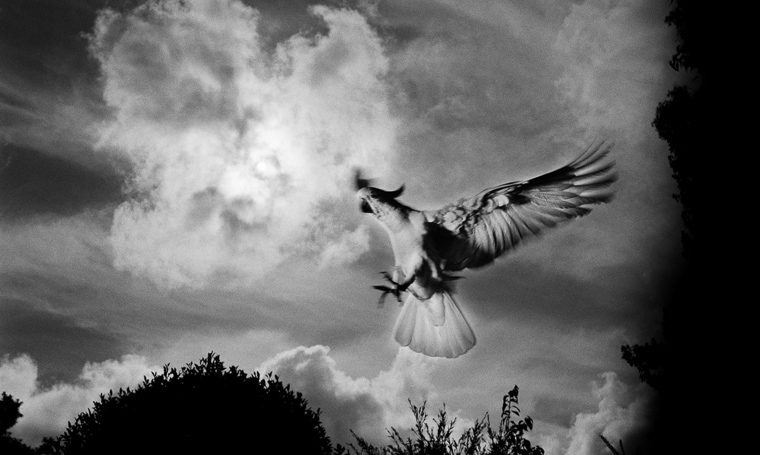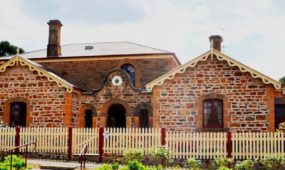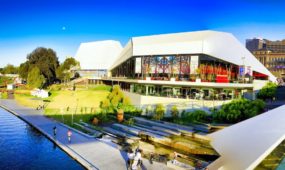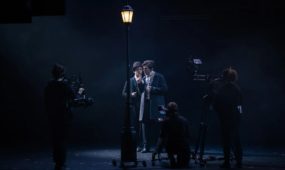Trent Parke's photos capture the brilliantly ordinary struggle for life
Arts
As the weather cools and the city comes down from the hot crush of Mad March, the Adelaide Festival of the Arts retains a toehold on North Terrace, presenting Trent Parke: The Black Rose at the Art Gallery of South Australia until May 10.

Sign up to receive notifications about new stories in this category.
Thank you for subscribing to story notifications.

The show – by Australia’s only Magnum photographer – is an immersive multimedia display over a series of curtained-off dark rooms. Shot over seven years and augmented by images taken by Parke’s wife, photographer Narelle Autio, the installation documents Parke’s quest to reclaim lost memories of his childhood.
Following the traumatic death of his mother when he was 12, Parke blocked out the preceding years of his life. Not long after, he picked up his mother’s Pentax camera and began to develop what would become a life-defining vocation.
The Magnum cooperative is world-renowned for encouraging and showcasing, in its own words, “the idiosyncratic mix of reporter and artist” – a description that could have been tailor-made for Parke. He was a sports journalist for The Australian, before going freelance at the turn of the century.

Trent Parke, Ants on Jatz cracker biscuit, Dampier, Western Australia, 2011. © Trent Parke/Magnum Photos
Life isn’t made of stories that you cut into slices like an apple pie. There’s no standard way of approaching a story. We have to evoke a situation, a truth. This is the poetry of life’s reality.
The Black Rose is Parke’s story, perhaps the most personal one he could share, but one that presents universal questions of life and death, past and present, tentatively leading us into thoughts of our place in the future.
Parke does not describes himself as a writer, although visitors may dispute that after reading some of his interpretive text. Via video, he invites us into not only his practice, but his very personal process to reclaim or reconstruct his earliest memories. Having grown up in Newcastle and living a fairly nomadic lifestyle, Parke and his family moved to Adelaide in 2007.
We become part of the development process, as though by passing through the blackout curtains we are entering his darkroom and directly participating in his ruminative discourse. There is little leeway for divergent interpretation, little flexibility to guess or hypothesise the artist’s intent.
He’s there, and it’s fixed: his face appearing in the developing bath, his voice over the commentary, his image at different ages and stages becoming as familiar as a relative’s. Alongside these devices are exquisite photographs displayed like the records of a natural historian’s field trip into a new alien environment: objective, inquisitive, informed.
The universal connections of this experience is extended to ambiguous images from nature: dirt patterns become prophecy; tree trunks reach and contort like dancers, white and flattened by the flash; bugs caught circling a street light could be planets orbiting an unknown star.
Perhaps the most macabre of these are haunting images of dead rats and mice, trapped and desiccated, which represent figures from Parke’s early nightmares. The threat now passed, they are preserved in a non-toxic two-dimensional medium: collected, curated and pinned to the wall in full taphonomic detail. A taxonomy of memories.
Death, like an unshakable companion, is present throughout this exhibition. But the triumph of this Wunderkammer of curiosities is Parke’s examination of the serendipitous beauty and wonder to be found in the everyday, the brilliantly ordinary struggle for life.
Whether it is turtles breeding, the way light behaves when trapped in bubbles or a cockatoo’s miraculous mid-air acrobatics in the backyard, Parke has captured and celebrates the random wonder of his environments, recording the repetition of pattern and form within the natural world.
We are reminded of a guest of the last Adelaide Festival of Ideas in 2013, Lawrence Weschler and his typology of convergences: is there meaning behind these similarities, this naturally occurring symbolism surrounding us?
The Dark Rose is a moving and beautiful exposition, elucidated further by the catalogue essays from the gallery’s curators, Julie Robinson and Maria Zagala. Parke may still be on a quest to understand his memory and trace his origins in the wind.
In doing so, like the most ardent explorers of the natural world, his greatest achievement is perhaps simply making it home.
Trent Parke: the Black Rose is at the Art Gallery of South Australia until May 10.
![]() Heather L. Robinson, Flinders University
Heather L. Robinson, Flinders University
This article was originally published on The Conversation. Read the original article.
Jump to next article







